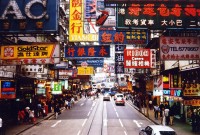People in Hong Kong are being warned about fake HK$100 (€11/$12) circulating around the region.
The Standard reported that there has been a “400 percent increase in the number of counterfeits seized” this year, and that police are advising people to examine their notes very carefully, as 923 fake HK$100 notes have been seized, which is four times more than the same time last year. Tommy Cheng, Chief Inspector for the Commercial Crime Bureau, said: “These counterfeit banknotes are mainly produced by criminals using inkjet printers. The banknotes come with a smooth surface, and carry no embossed feel.”
1,836 fake notes have been seized this year, and Cheng added that “these banknotes bear no security features but have silver stickers disguised as the holographic windowed thread, and are poor in quality”. Authentic bank notes have features such as a change of colour when the note is moved at different angles, as well as a complete silver thread which shows in the holographic window under light, and the feel of the note is different too as the real money feels embossed.
Criminals are tending to fake smaller bills because they think people are less likely to notice when handling them, Cheng said, adding that “most seized notes are handled by banks”, and that “some banknotes were also handled by small-scale retail stores, taxis, wet markets and convenience stores”. Although in the last nine months there have been 20 people arrested on charges relating to counterfeit notes, Cheng said that he did not believe that they were “major criminal syndicates” because the crimes involved small amounts of money.
Under Hong Kong law, anyone who passes a fake note can go to prison for a maximum of 14 years, and Cheng advises the public to turn the notes over to banks or police without fear of arrest: “For example, if you pay with a banknote which you did not know was fake, and no more fake banknotes are found on you later, then you apparently have no intention to possess it.”
